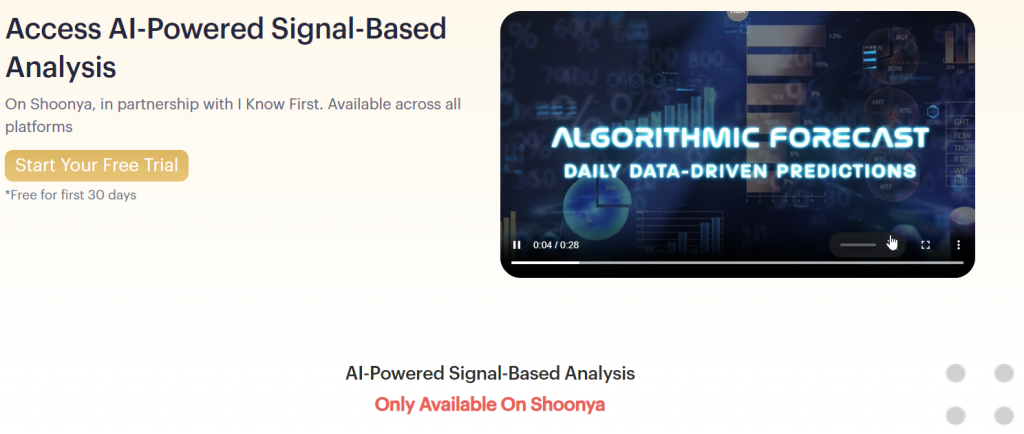Begin small and gradually increase the size of your AI trading in stocks. This strategy is ideal for dealing with high risk situations, like the penny stocks market and copyright markets. This method lets you build experience, refine your models, and manage risks efficiently. Here are 10 top suggestions for gradually scaling up the AI-powered stock trading processes:
1. Create a detailed plan and strategy
Tip: Before starting you can decide on your trading goals and risk tolerance and target markets. Begin with a small but manageable portion of your portfolio.
The reason: A well-planned business plan can assist you in making better choices.
2. Test using paper Trading
Start by simulating trading with real-time data.
What's the benefit? It is possible to try out your AI trading strategies and AI models in real-time conditions of the market, with no financial risk. This will help you determine any issues that could arise prior to scaling up.
3. Choose an Exchange Broker or Exchange with Low Fees
Tips: Select an exchange or brokerage company which offers low-cost trading and allows fractional investment. This is extremely useful for people who are just starting out in the penny stock market or in copyright assets.
A few examples of penny stocks: TD Ameritrade Webull E*TRADE
Examples of copyright: copyright copyright copyright
Why? Reducing transaction costs is vital when trading smaller amounts. It ensures you don't eat into your profits through paying excessive commissions.
4. Initial focus is on a single asset class
TIP: Concentrate your studies on one asset class initially, like penny shares or copyright. This can reduce the amount of work and make it easier to concentrate.
Why? Concentrating on one field allows you to develop expertise and cut down the learning curve before expanding into other assets or markets.
5. Use Small Position Sizes
Tip: Reduce the risk you take by limiting the size of your positions to a small proportion of the amount of your portfolio.
What's the reason? This will help lower your risk of losing money, while you develop and fine-tune AI models.
6. Increase your capital gradually as you gain in confidence
Tip: Once you see consistent positive results over several months or quarters, gradually increase the amount of capital you invest in trading in the time that your system demonstrates reliable performance.
What's the reason? Scaling up gradually allows you gain confidence and learn how to manage your risks before placing bets of large amounts.
7. For the first time, focus on a basic model of AI
Begin with basic machine models (e.g. linear regression model or a decision tree) to predict copyright or stock prices before you move onto more complex neural networks as well as deep-learning models.
Reason: Simpler trading systems are easier for you to maintain, optimize and comprehend when you first get started.
8. Use Conservative Risk Management
Tip: Implement strict rules for risk management including strict stop-loss orders, limit on the size of a position, and conservative leverage usage.
What's the reason? Risk management that is conservative helps you avoid suffering huge losses in the early stages of your trading career, and also allows your strategy to increase in size as you gain experience.
9. Returning Profits to the System
Reinvest your early profits into upgrading the trading model or scalability operations.
Why is this? It helps you increase your return over time while improving infrastructure needed for larger-scale operations.
10. Check AI models on a regular basis and make sure they are optimized
Tip: Continuously monitor the effectiveness of your AI models and improve their performance with more accurate information, up-to date algorithms, or improved feature engineering.
Why: Regular optimization ensures that your models are able to adapt to changes in market conditions, enhancing their predictive capabilities as your capital grows.
Bonus: If you've got an established foundation, it is time to diversify your portfolio.
Tip. Once you have established an established foundation and your trading system is always profitable (e.g. switching from penny stocks to mid-caps or adding new copyright), consider expanding to additional asset classes.
The reason: Diversification can help reduce risk and can improve returns by allowing your system to benefit from market conditions that are different.
If you start small and then gradually increasing your trading, you will be able to study, adapt and create a solid foundation to be successful. This is especially important when you are dealing with high-risk environments like trading in penny stocks or on copyright markets. Check out the top rated ai in stock market advice for more info including ai stocks to invest in, ai for copyright trading, ai trading platform, investment ai, ai copyright trading, ai investment platform, ai penny stocks, trading bots for stocks, ai day trading, ai day trading and more.

Top 10 Tips To Monitor The Market's Sentiment Using Ai To Pick Stocks, Predictions And Investing
Monitoring market sentiment is vital for AI-powered predictions, investments and selecting stocks. Market sentiment affects prices of stocks and general market trends. AI-powered tools are able to analyze large amounts of data in order to discern sentiment signals. Here are 10 top ways to make use of AI to monitor the market's sentiment and make the best stocks selections:
1. Utilize Natural Language Processing (NLP) for Sentiment Analysis
Tip: To gauge the opinions of users on social media, use AI-driven Natural Language Processing techniques. They can be used to analyze reports on earnings, news articles, blogs and other financial platforms.
The reason: NLP is a powerful tool that allows AI to understand and measure the emotions or opinions or market sentiment expressed through unstructured texts. This helps traders make better choices when it comes to trading.
2. Monitor Social Media for Sentiment Indicators
Tips Setup AI algorithms for scraping real-time data on social media, news platforms, forums and other sources to determine the shifts in sentiment related to specific events or stocks.
The reason: News and social media can have an immediate influence on market movements and can be particularly volatile in investments like penny stock and cryptocurrencies. The analysis of sentiment in real-time can be used to make quick-term decisions.
3. Integrate Machine Learning for Sentiment Prediction
Tip: Use machine learning algorithms to forecast future market sentiment trends based on historical data and sentiment signals (e.g. price movements that are linked to social media or news).
The reason: AI can predict sentiment changes by learning patterns from historical stock data and sentiment data. This gives investors an edge in predicting price movements.
4. Combine the sentiments with technical and fundamental data
Tips: Make use of traditional technical indicators such as moving averages (e.g. RSI), as well as essential metrics like P/E or earnings reports to create an investment strategy that is more complete.
The reason: Sentiment is an additional layer of information that can be used to enhance fundamental and technical analysis. Combining both elements allows the AI to make better stock predictions.
5. Changes in the mood of employees in earnings reports and other important events
Tips: Make use of AI to track changes in sentiment before and after key events like earnings reports, product launches, or regulatory announcements, as they can profoundly affect the price of stocks.
What causes them? They often trigger significant changes in the market's mood. AI can detect fluctuations in sentiment rapidly, giving investors insight into stock movements that could be triggered by these triggers.
6. Use Sentiment Clusters as a way to identify market trends
Tip: Sort the sentiment data into clusters to find broad market trends, segments or stocks experiencing positive or negative sentiment.
What is the reason? Sentiment grouping permits AIs to identify new trends that aren't visible in individual stocks and smaller data sets. This helps identify sectors or industries with changing investor interest.
7. Apply Sentiment Scoring to Stock Evaluation
Tips: Use news or forums, as well as social media to analyse sentiments and build scores. Use these scores to classify and rank stocks according to either a positive or negative slant.
What is the reason: Sentiment Scores are an accurate measure of the sentiment among investors towards a specific stock. This helps make better investment decisions. AI can help refine scores as time passes, enhancing their predictive power.
8. Monitor Investor Sentiment across Multiple Platforms
Tips: Check the sentiment across various platforms (Twitter and financial news websites, Reddit etc.). Cross-reference sentiments across different sources to build a full image.
Why? Sentiment may be inaccurate or distorted on one platform. The monitoring of sentiment across multiple platforms gives a better and more precise view of investor sentiment.
9. Detect Sudden Sentiment Shifts Using AI Alerts
Set up AI alerts to notify you of significant shifts in the sentiment toward a specific sector or stock.
What's the reason? Rapid shifts in sentiment can be preceded by swift price fluctuations. AI alerts can help investors take action quickly before market values adjust.
10. Study trends in sentiment over the long-term
Tips: Use AI to study the long-term trends in sentiment for sectors, stocks, and even the overall market (e.g., bullish or bearish sentiment for months or even years).
What's the reason? Long-term trends in sentiment can be used to pinpoint stocks with a high future potential, or alert investors to the possibility of new risk. This perspective can be used to guide long-term investing strategies and also to complement the short-term signals.
Bonus: Mix Sentiment with Economic Indicators
Tip. Combine sentiment analysis with macroeconomic indicators like inflation, GDP growth and employment statistics to determine how market sentiment is affected by broader economic conditions.
The reason: Economic conditions be a major influence on the mood of investors. This, in turn, can affect the price of stocks. AI can give deeper insights on the market through linking emotions to economic indicators.
If they follow these guidelines investors can make use of AI to track and interpret market sentiment, allowing them to make more informed and timely stock choices forecasts, investments, and predictions. Sentiment analyses provide a unique real-time layer that complements traditional analysis. They can help AI stock pickers navigate difficult market conditions more effectively. See the most popular ai stocks to invest in url for website info including best copyright prediction site, ai investing platform, stock ai, ai stock trading app, copyright predictions, ai penny stocks to buy, stock trading ai, ai stock analysis, best copyright prediction site, ai stock predictions and more.
